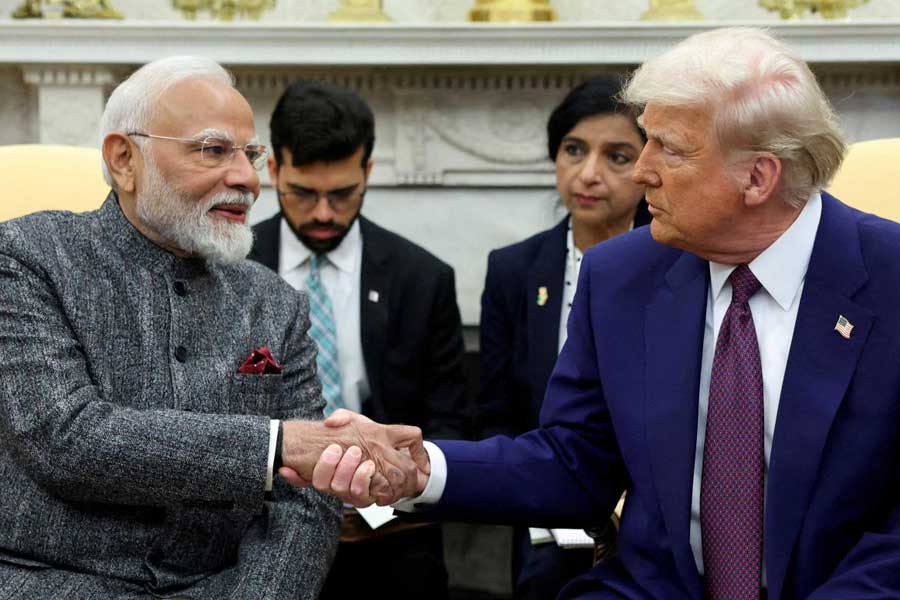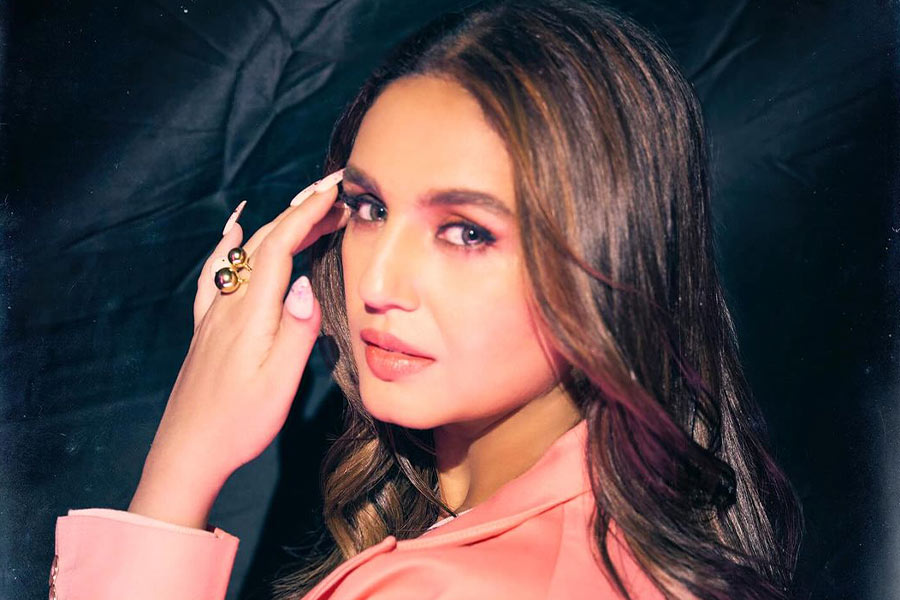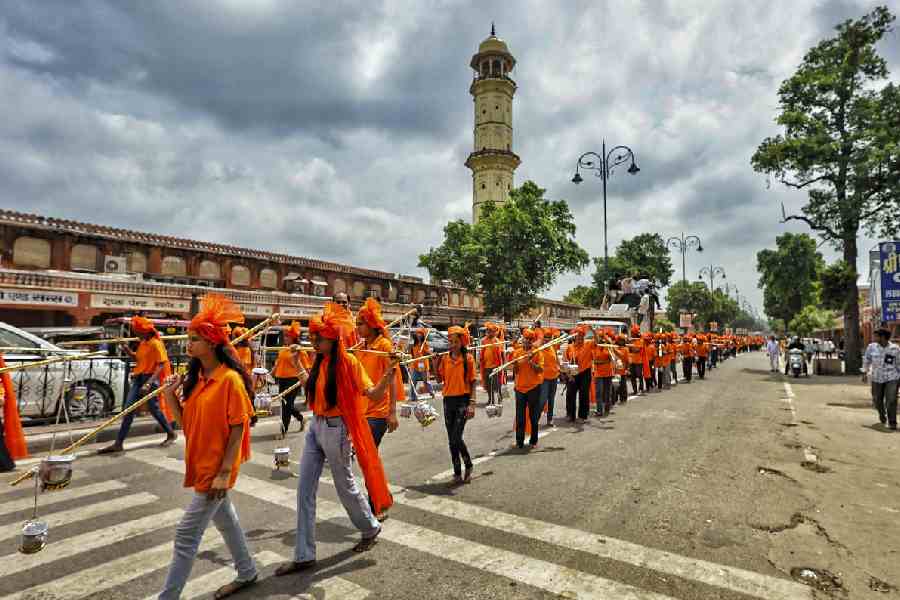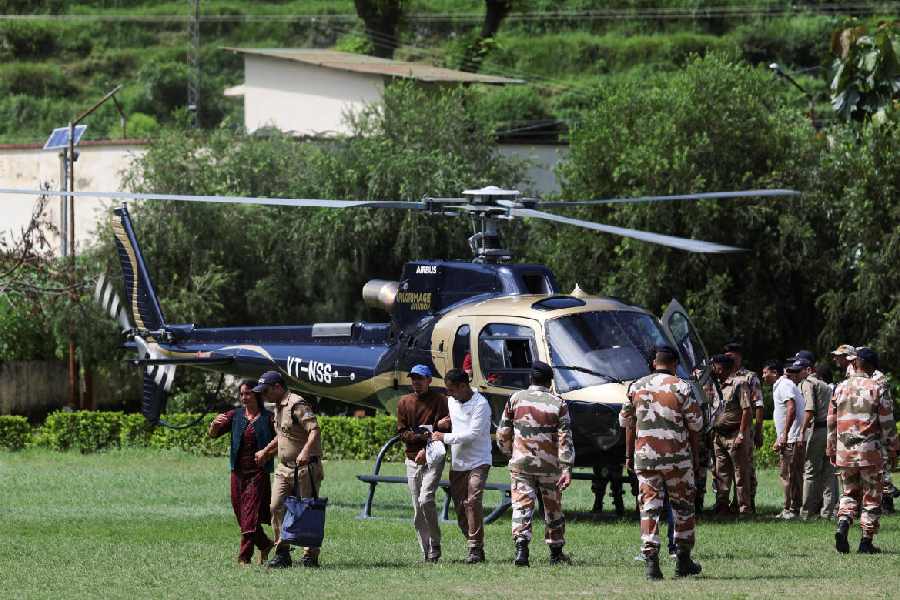

He was excused for all his galtis (mistakes), and he ought to be. Shaukat Hussain Khan (picture, left), the able son of Ustad Sharafat Hussain Khan, showed how an ancient and prestigious gharana returns to life. The two-day music festival arranged by Calcutta Club in association with The Telegraph was enlivened by the magical performance of Khan, who can perfectly merge the domineering traits of a mardana (masculine) gharana (Agra-Atrauli) with the pain of human sentiments in his singing style. He commenced with Raga Jaijaiwanti and enthralled the audience with the traditional and elaborate alaap (called nom-tom alaap, an excerpt from Dhrupad, with the abbreviation of phrases like "Hari Om Ananta Narayanam"), which is rarely heard in a vocal recital.
This elongated alaap created the ambience of the raga and he continued with the vilambit kheyal. Each time, he created sparks with the various uses of gandhars, especially in the lower octave. His taans in three octaves were intelligent and took an unpredictable turn instead of taking the usual linear path. He sang two traditional bandishes, "Nadan ankhiyan lagi re" and " Mere mandir ab woh nahi aye" in drut teentaal -which reminded one of the singing style of the doyens of the Agra Gharana, Ustad Faiyaz Khan and, of course, of Shaukat Hussain Khan's father, Ustad Sharafat Hussain Khan.
The vistaars expressed the stability and the command of his voice. The beauty of Khan's singing style remained the same when he sang a drut kheyal in a very special raga from the Agra Gharana, Suha Sughrai. The rendition was followed by a bhajan, " Vande Nanda Kumar". Finally, he won the hearts of the listeners with the famous Bhairavi dadra, " Banao batiyan". That winter evening, Khan successfully evoked the style of his musical ancestors and mesmerized listeners with the mix of heritage and modernity. Shaukat Hussain Khan was accompanied by Sujit Saha on tabla and Hiranmoy Mitra on harmonium.
The promising voice of another young vocalist, Manjiri Asnare Kelkar, enchanted the audience as well. This sincere follower of Jaipur-Atrauli Gharana started with Jhinjhoti, a raga which is not much heard in vocal renditions. She made the vilambit kheyal, "Mahadeva Vishwambhar", intricate and enjoyable with voice modulations. Her voice is a beautiful combination of clarity, generosity and sweetness. The taans, especially in middle and upper octaves, sounded good to the ears. The drut kheyal in teentaal, "Har har Shankar", was enjoyable too. It was followed by the aochar of Raga Vasant Kedar. She took time to flourish but her honest effort made the listeners familiar with the nature of the raga. The artist perfectly presented the quintessence of two different ragas and their compilation.
After a madhyalay kheyal in Vasant Kedar, she smoothly shifted to Kedar and sang a well-known bandish, " Chatur sughar piya" in drut ektaal. Her innovative taans and vistaars,sung with spontaneous ease, attracted the audience. She showed her expertise of tappa in Kafi and concluded with " Shyam bajaye tore ghar muraliyan". Kelkar was accompanied by Shrikant Bhave on tabla, Shriram Hasabnis on harmonium and Amruta Mogal on tanpura and vocal support.
Sitar maestro Shahid Parvez (picture, right) enchanted his listeners with his expert handling of the intricacies of Imdadkhani Gharana, as always. The long alaap was arresting and full of sparkling mirs. The elevation from lower octave to middle octave was charming. The blending of heart and technique was perfect in his rendition of the gats. Although he played for a long period of time, the variation of his taans and vistaars saved them from getting monotonous. But he sounded a little mechanical while playing the forceful taans and paltas. The listeners expected more of him. He touched the audience with the concluding thumri in Mishra Khamaj. The artist was perfectly accompanied by Hindol Mazumdar on tabla.
The Kuchipudi performance of Yamini and Bhavna Reddy attracted the audience with its gorgeous presentation and unique philosophy. The theme of the friendship between Krishna and Shiva, their presence in each other's body and mind as well as their relation with the human soul opened up a new horizon for the audience. They showed the tandava in Krishna's Kaliyadaman, and expressed the joy of colours while Srihari and Shiva both participated in Hori. This unique concept was manifested in the expressions, postures and footwork of Yamini. Bhavna's performance was charming too.
The presentation was choreographed by Raja and Radha Reddy. The dance form, accompanied by the composition of M.S. Subbulakshmi, " Ambujanam Narayanam", was beautiful. Yamini was exceptional with the plate dance, as always. The assistance on vocal rendition by Lavanya, mridangam by B. Bhaskar Rao, flute by Ananta Krishna and violin by Radhakrishnan made the entire presentation compact and striking.










